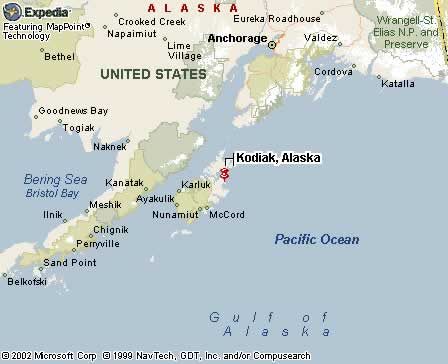|
|
Canku Ota |
|
|
(Many Paths) |
||
|
An Online Newsletter Celebrating Native America |
||
|
December 14, 2002 - Issue 76 |
||
|
|
||
|
Experts Striving to Revive Language |
||
|
by Megan Holland - Kodiak Daily
Mirror
|
||
|
credits: art Generations
by Barbara Lavallee
|
 Kodiak,
AK - The Alutiiq Museum is working to revive a critical piece of Alutiiq
heritage by developing a dictionary and establishing a center for the
disappearing language. Kodiak,
AK - The Alutiiq Museum is working to revive a critical piece of Alutiiq
heritage by developing a dictionary and establishing a center for the
disappearing language. Today the median age of Alutiiq speakers is 67. From a population of 3,000, only about 400 still speak the language. In 1970, there were roughly 1,000 speakers. The museum and Alutiiq community are working to reverse the trend. Shauna Hegna, Alutiiq Language Coordinator at the museum, will spend the next year working closely with elders, tribal councils, the Kodiak Area Native Association, Native corporations and other organizations of the Kodiak archipelago to plan a comprehensive Alutiiq language program. At the same time, April Laktonen Counceller, Alutiiq Language and Education Outreach Specialist at the museum, is working on a dictionary with the Alaska Native Language Center in Fairbanks. Hegna and Counceller are both Alutiiq, but neither was taught the language. They, like many others today, grew up speaking English and maybe a little Russian. Russian Orthodox monks did the first work on Alutiiq language, though their progress continued only to about 1807 and almost none of their work survives. After that, a few other people worked on the language during the Russian period, but still very little progress was made. The first modern linguistic work was done in the 1960s. In 1978, a grammar book and dictionary with 1,600 word entries was produced. The dictionary being compiled now will have more than 6,000 entries. The words were collected more than 15 years ago by the original lexicographer, Jeff Leer, but have been on little pieces of paper in boxes at the language center in Fairbanks, Counceller said. The language, to be entered into a computer program, includes the two main Alutiiq dialects and its regional subdialects. The center will be able to print dialect-specific dictionaries. The loss of language began in the 19th century. Later, when the Bureau of Indian Affairs schooled Native children, the objective was assimilation with American culture and language. Students throughout Alaska were punished for speaking their Native languages. Many other Alaska languages have gone through this recording process, according to the museum. Some have had much success. The Chickaloon village near Palmer is now teaching the Athabaskan language to schoolchildren through immersion programs. The language skipped generations but is now being spoken by children again. "That's the goal," Counceller said, "to get people speaking again." The museum encourages elders who are interested in teaching Alutiiq to adults, and adults interested in learning Alutiiq, to contact them. "We are at a really critical point right now," Counceller said. "If we don't promote and preserve it in the next generation or two, it will be a dead language, lost forever."
|
|
|
||
|
|
||
| Canku Ota is a free Newsletter celebrating Native America, its traditions and accomplishments . We do not provide subscriber or visitor names to anyone. Some articles presented in Canku Ota may contain copyright material. We have received appropriate permissions for republishing any articles. Material appearing here is distributed without profit or monetary gain to those who have expressed an interest. This is in accordance with Title 17 U.S.C. section 107. | ||
|
Canku Ota is a copyright © 2000, 2001, 2002 of Vicki Lockard and Paul Barry. |
||
 |
 |
|
|
The "Canku Ota - A Newsletter Celebrating Native America" web site and its design is the |
||
|
Copyright © 1999, 2000, 2001, 2002 of Paul C. Barry. |
||
|
All Rights Reserved. |
||
